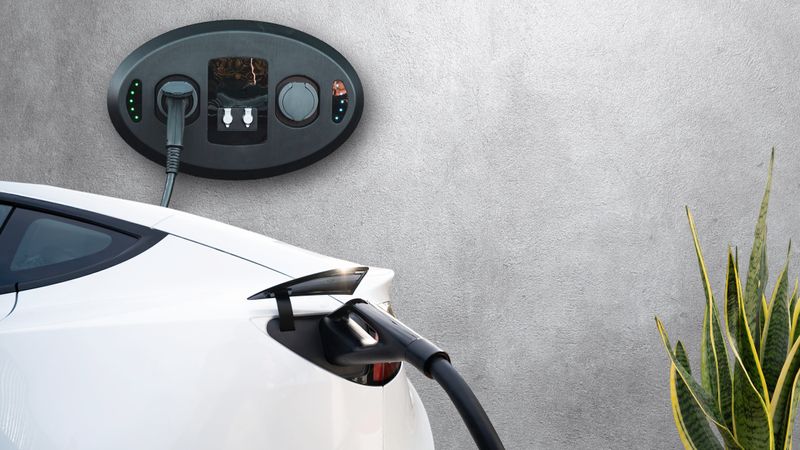Single-Board Computers (SBCs) for EV Chargers
Single-board computers (SBCs) are the brain of an EV charger. With the EV charging market taking off, SBCs are at the centre of the electrification movement. But what are the challenges that lay ahead? And what do cutting-edge SBCs bring forth?
It is no surprise that EV charging is at the foundation of the automotive industry’s transformation to electric vehicles. Whether it is public charging stations or wall chargers in our garages, EV chargers are in increasingly high demand today, with more and more electric vehicles on the roads.
A PWC study projected that the number of electric vehicles in the United States alone is to reach 27 million by 2030 and no less than 90 million ten years later. To accommodate that, PWC analysts estimated a 775% growth rate in the number of charge points to hit 35 million in 2030.
Across the pond, a 2021 report by the Competition and Markets Authority in the United Kingdom suggested a ten-fold increase in the number of public charge points by 2030 to reach at least 280 to 480,000 locations.
But the trend is not merely about EV charger installation. The technology behind these chargers is also developing quite rapidly. Be it for charging speed, power consumption, connectivity, or portability, what lives inside the charging unit is what makes or breaks the adoption of electrification in the automotive industry.
This brings us to the computing device inside the charger, otherwise known as a Single-Board Computer (SBC). An SBC is a full-functioning computer mounted onto a single circuit board. It includes the microprocessor(s), memory, input/output peripherals, and other elements. It is an embedded device that is preferred for a wide array of applications, one of which is EV chargers.
Why are SBCs so important for EV charging?
While EV charging is a demanding application, SBCs provide several important benefits that indicate significant potential in this market. From computing power to low design effort, portability, and supply chain minimisation, the technological and commercial advantages brought forth by SBCs are what push the adoption of EV chargers forward.
Certainly, the most important attribute that underlies all the others is reliability. These embedded controllers have a long track record of steadfast performance, which is crucial to the functionality of EV chargers. Whereas desktop computers, for instance, are promoted for their adaptability based on user preferences, SBCs’ simple and robust structure results in much fewer issues and minimal downtime, rendering them the preferred option for devices that require constant activity and reliability.
Here are the top 5 advantages of SBCs that EV chargers can make use of:
Portability and customizability
SBCs are compact in size. They are ready-to-use controllers that are embedded in and integrated with any EV charger system no matter how limited the space is.
As EV charger designs vary in size based on where and how they are used, the space inside can be quite confined. SBCs’ compactness can help solve a lot of design challenges as they can fit in almost any functional design.
In addition, SBCs can be customised to fit not only any design but also any functionality. With a fully configurable design, a user can choose what components to have on the board, how small the SBC should be, and how they connect to the end application.
Compatibility
SBCs are typically designed to work with different types of hardware and run a variety of operating systems and software applications. This compatibility enables their use with any system.
Whether it is operating systems, such as Linux, Windows, or Android, or software applications, such as web servers or programming languages, SBCs can be designed to provide such compatibility and enable easy operation. As for hardware, SBCs have a variety of options for processors, storage, RAMs, and peripheral input/output interfaces, such as HDMI and USB ports.
While not all SBCs fit all applications, there is always an SBC for an application. And this compatibility is important for EV charging units running on different systems.
Low cost and power efficiency
It is trivial to realise that SBCs are cost-efficient. Their minimal size and compactness lead to a lower cost than relatively larger, traditional computers. Combining multiple components of a system on one module is a massive step towards minimising the cost of materials and manufacturing.
But lower cost does not come at the expense of efficiency. SBCs are required to be at high efficiency to provide sufficient serviceability in EV chargers. That is why they are designed with efficiency in mind, supporting both public and domestic EV charging units.
Connectivity and Monitoring
Connectivity is at the core of network and remote systems. EV charging requires such a feature, especially in networks like smart grids. For instance, SBCs can be used to communicate with smart grids, enabling chargers to adjust their charging rates based on grid demand and the availability of renewable energy sources. SBCs can also communicate with connected vehicles, allowing for automatic charging initiation and the transfer of charging data between the vehicle and the charging station.
With such functionality, SBCs in EV chargers would be able to help with handling complex tasks such as real-time monitoring for preventive maintenance, data collection, and analysis. This enables EV chargers to offer a variety of services, such as remote charging management, billing, and payment processing.
With the use of SBCs, EV chargers can collect and analyse data on energy consumption, charging patterns, and user behaviour, creating more efficient charging solutions.
High performance and low power consumption
Applications that include embedded systems like SBCs require a certain level of power efficiency, in which the ratio of performance-to-power consumption is as high as possible. EV chargers are no different. In fact, the EV charging speed is highly dependent on the processing power level.
SBCs have the capacity to provide that, given their cutting-edge components and architecture. In fact, researchers have studied the performance of SBCs and SBC clusters and found that recent developments in SBCs have seen an increase in performance followed by an increase in energy efficiency and value for money.
For a demanding EV charging market, SBCs are a strong fit as an embedded processing solution to provide sufficiently high performance while saving on energy consumption.
Yet, with all the advantages SBCs offer, they still constitute a growing industry. This means there are always challenges to be tackled. From processing power to limited storage and memory capabilities, heat dissipation, and security risks, the challenges ahead of SBCs may still need to be solved. However, the constant development of SBC technology shows a huge potential in overcoming such challenges and playing an increasingly important role in the development of smarter, more sustainable EV charging solutions.
<image>
An SBC to help push electrification: The ROCK series from OKdo
The all-new ROCK series of SBCs from global technology company OKdo has hit the market with cutting-edge features that can help engineers develop innovative EV charging solutions.
Here are some of the most prominent features you can find in ROCK series of SBCs.
Powerful SBCs | Flexible and Compact SoMs | Fully Customisable SBCs |
High-performing Hexa-core Rockchip RK3399-T processor | Compact size for easy integration into different designs | Develop low-cost and efficient applications for embedded systems |
Wide OS compatibility, including Android | Reliable & Powerful Rockchip RK3566 SoC | Fully configurable design |
Expandable storage capability | Quad-core Arm® Cortex®-A55 CPU | Add or remove components |
Supporting 4K & 8K displays | Flexible storage & wireless connectivity | Your board, your way |
With OKdo’s mission to “deliver imagination, creativity, and technical expertise” to help product developers generate new ideas and turn them into commercial reality, the ROCK series is a clear representation of what OKdo does.
Choose between ROCK 3 Series, ROCK 4 Series, or ROCK 5 Series, and customise your board to fit your EV charger. Check out the solutions page here.
The ROCK Engineering Challenge
Do you have an idea of how to use the ROCK? The challenge is open to all OEM's, startups, research teams, and students working on innovative SBC applications. Show the world what you can create with cutting-edge single-board computer hardware.
We invite engineers, entrepreneurs, inventors, and developers to submit an idea for a part, product, or system that takes advantage of the ROCK single-board computers.
The first 500 valid entries will receive a ROCK board of choice worth $45 - $159.
Simply tell us what you are working on, and we'll send you a piece of cutting-edge hardware to bring your ideas to life.The most-cutting edge entry will be rewarded with a grand prize of a $50,000 partnership with electronics company OKdo to scale up their project idea.
The challenge is now open until April 12th, 2023. Read more here.
How to Enter?
Submit your entry via this form. You will be asked for a comprehensive idea description, details of your team, and images or videos that support your idea. The challenge is open until April 12, 2023.
We can’t wait to see your entries!


